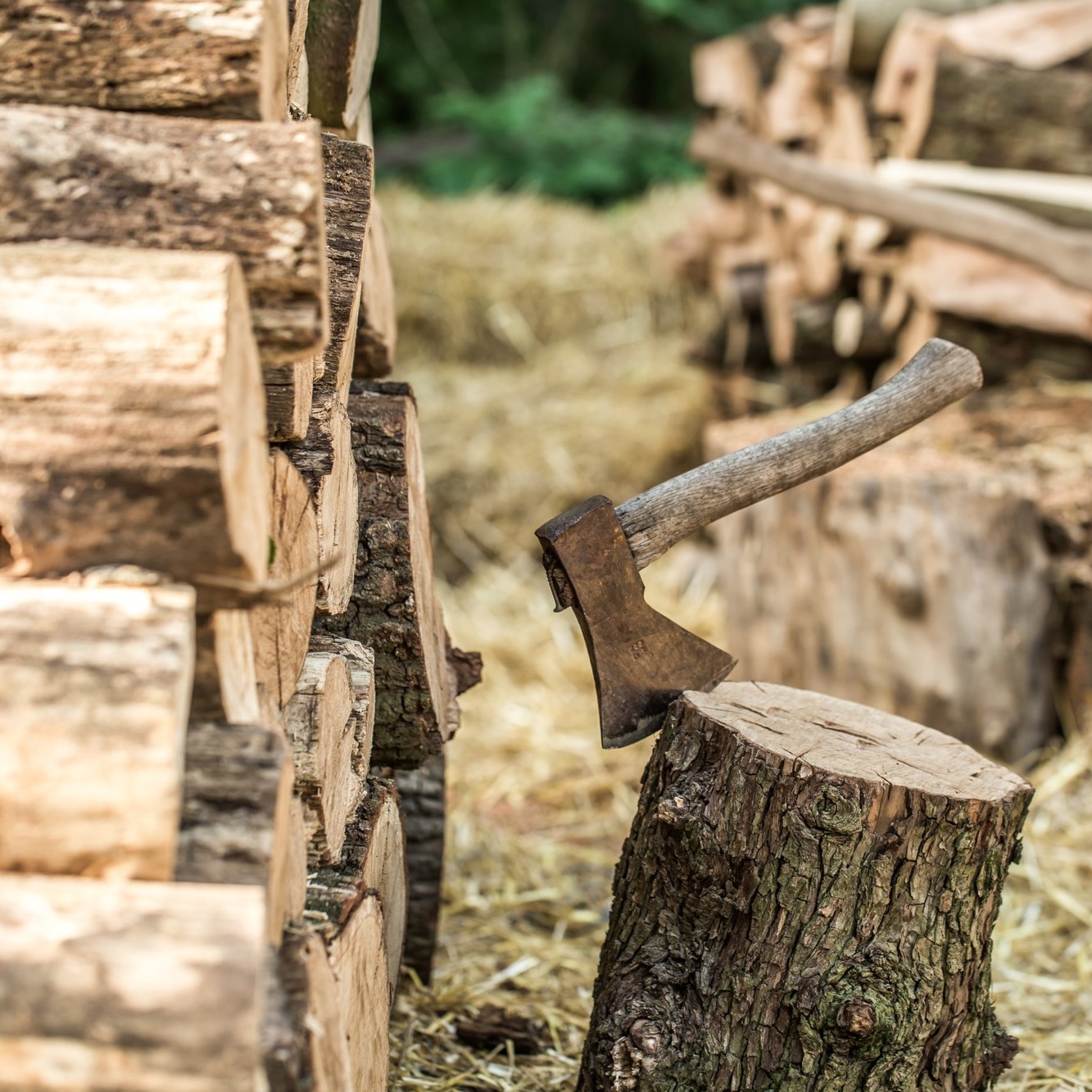Parveen is from a small town in the Samina Sadat area of Dera Ghazi Khan. She and her husband had been farming on their eight-acre family land along the river for 12 years, but the floods in 2022 washed away their house and farm.
The family was compelled to relocate to the city. Parveen and her two daughters now sustain themselves and their families by working in people's homes.
The 2022 floods significantly impacted the communities along the banks of the Indus River. The erosion of the Indus River has intensified as a result of this flood, leading to the sweeping away of many surrounding areas.
According to Relief Web, the 2022 flood in the district resulted in the loss of 67 lives, including women and children. Three hundred forty-two villages were affected, with over 24,000 houses being partially or wholly damaged. The disaster had a profound impact on approximately seven lakh people.
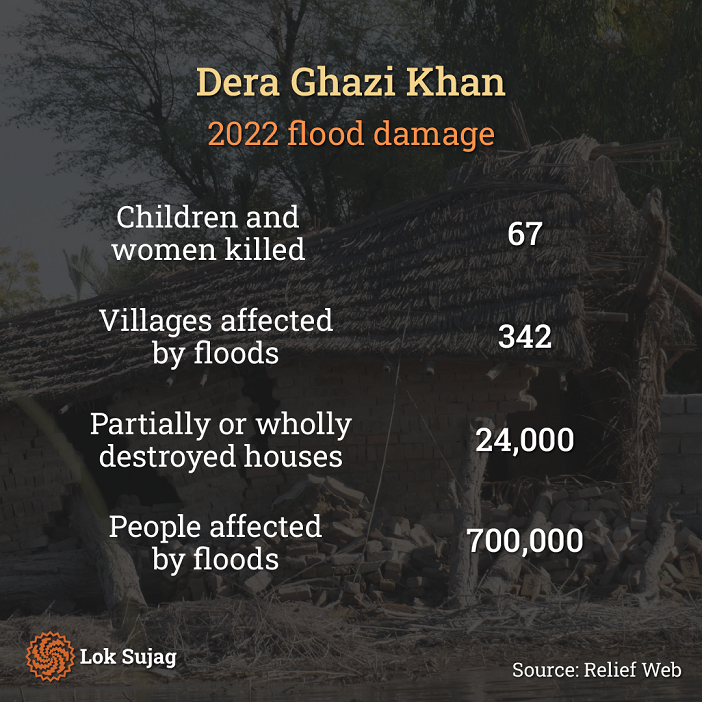
According to the local government website, the Indus River spans a length of 200 km within the district. Positioned east of the district, the river is flanked by the Mount Sulaiman mountain range on its western side.
The region faces a heightened risk of flooding from both mountain streams and river floods, with its distinctive geography making it particularly vulnerable to the impacts of climate change.
According to data from meteorological services, Meteoblue, the highest rainfall in the Dera Ghazi Khan district since 1994, occurred in 2022.
This pattern has seen a noticeable shift over the last ten years. For instance, following 1979, the highest rainfall was recorded in 2010, 2015, and 2020.
In contrast, the district experienced its lowest rainfall in four decades in 2021.
The flood in 2010 is regarded as the biggest flood in the region since the formation of Pakistan.
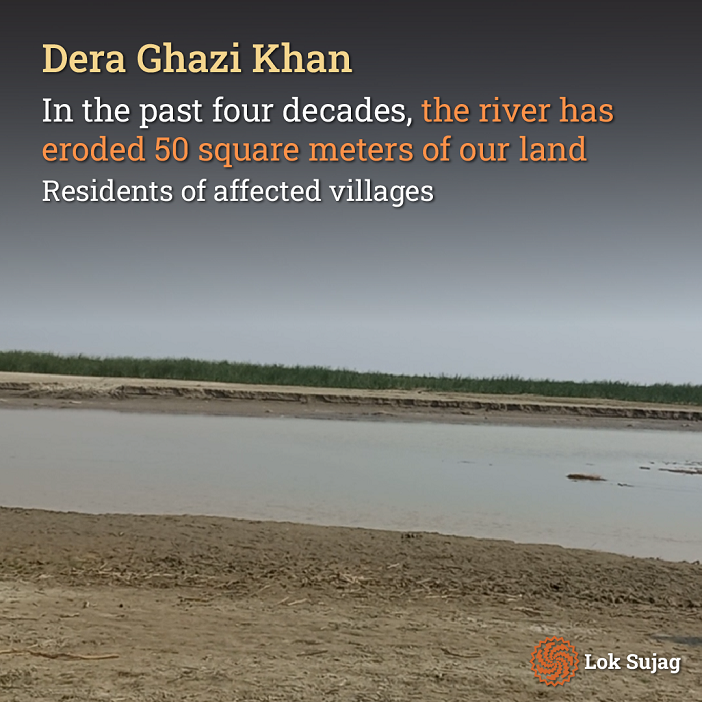
On August 2, 2010, a flood level of nine hundred sixty thousand cusecs was recorded at the Taunsa Barrage site on the Indus River, surpassing the seven hundred eighty-eight thousand six hundred forty-six cusecs recorded in 1958.
Parveen's husband took Lok Sujag to show them the remnants of his 'basti bhai' on the banks of the Indus River.
He said that the flood from the previous year washed away 250 houses, schools, mosques, and graveyards in the township. Some of the affected individuals sought refuge in the city and nearby villages. Many families now settled in Basti Khakhi, a few kilometres away, are grappling with housing challenges.
The elders of Basti Bhai said that the river eroded a significant amount of agricultural land, forcing many people to earn their livelihood through manual labour.
He said that over the past 40 years, the river has eroded 50 square meters of his land.
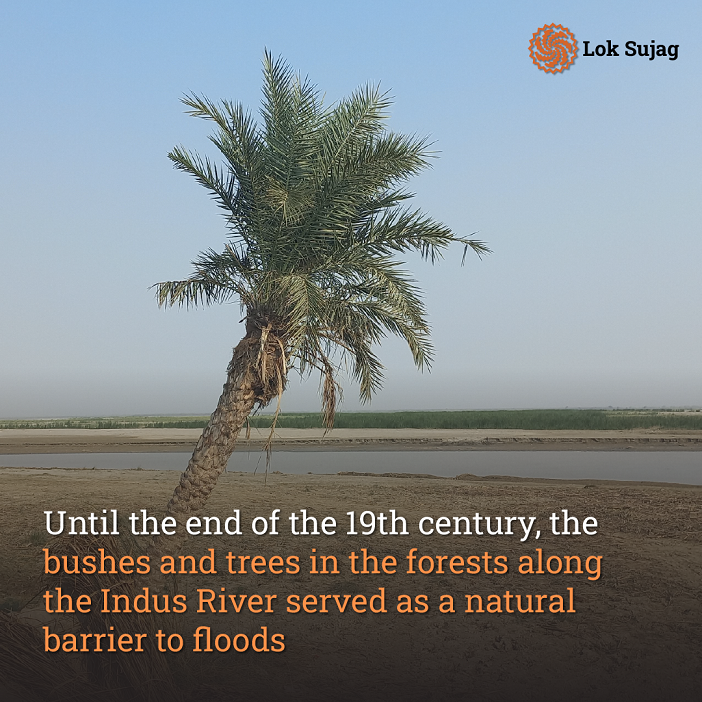
"We don't have land to build houses, and we've given up on cultivable land. We've also abandoned the decision to drill into the ground for water. What's the point when, six months later, the river will spoil it too?"
"Two years ago, ten truckloads of rocks were brought here to build a dam," said an elderly woman, "but the water washed away all the rocks. Currently, rocks from two trucks remain; the river has washed the rest away."
"I remember that night well when the flood announcement was made in the mosque, asking us to take care of ourselves, and then the water entered the mosque. After the mosque, there were people's houses. There was a cemetery on one side and a school on the other; the river washed away everything. Everyone was just packing their stuff and running."
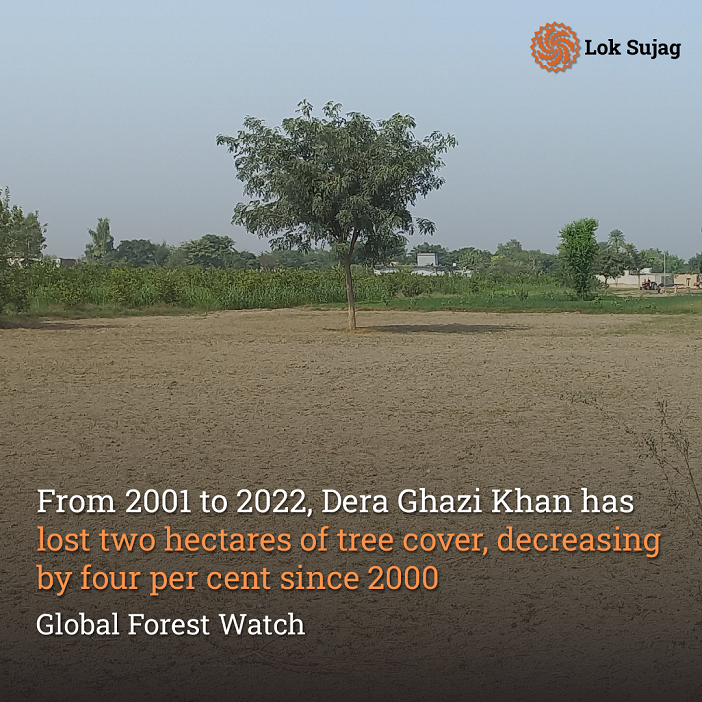
Former union councillor Mehboob Hussain Kushani said that he made significant efforts, together with the people of the area, to build a super dam. He took petitions to several high officials, and Lahore teams reviewed the situation.
Although the Super Dam was approved, and the map was prepared, practically, no significant action was taken.
Local people recall that until the end of the 19th century, the sides of the Indus River were covered with forests. These forests served as a source of wood and fuel and were habitats for various wildlife species, riverine, and migratory birds.
The bushes and trees within these forests acted as a natural barrier against floods, mitigating their intensity and impact. However, these forests have significantly diminished with the rise in human population and the expansion of agricultural activities.
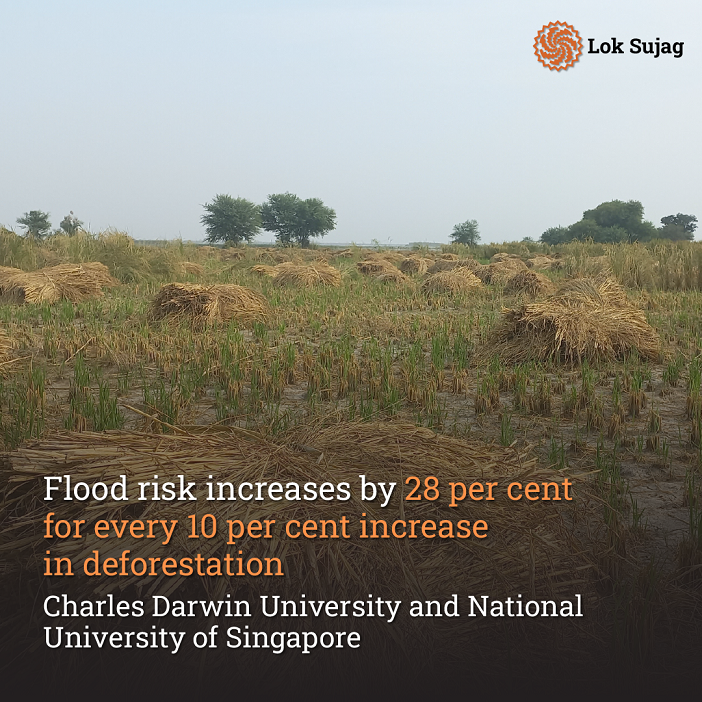
According to Global Forest Watch, Dera Ghazi Khan has lost two hectares of tree cover from 2001 to 2022, resulting in a four per cent decrease since 2000. This reduction contributes to an increase in carbon dioxide emissions.
A study conducted by Australia's Charles Darwin University and the National University of Singapore indicates that for every 10 per cent increase in deforestation, the risk of flooding rises by 28 per cent. Forests play a crucial role in filtering water, reducing erosion, regulating rainfall, maintaining groundwater levels, and acting as a buffer against the impacts of both droughts and floods.
Basham Zen has established a group named Ecoist, which is dedicated to raising awareness about the advantages of forests in Dera Ghazi Khan. According to Basham, reforestation along the Indus River is a straightforward solution. This can potentially prevent river erosion and significantly mitigate the impacts of floods.
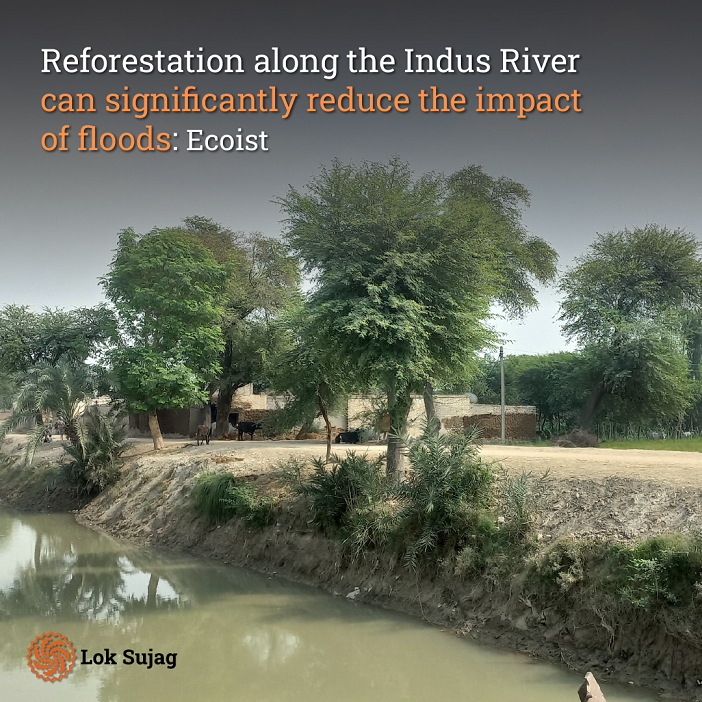
Noor Bibi, a resident of Samina, says that she and her family have been involved in agriculture for numerous years, but their crop production has been severely impacted by climate change. Ongoing droughts and unpredictable rains heighten their family's financial instability and food insecurity concerns.
"We have 10-and-a-half acres of land dedicated to growing cotton. Last year, production barely reached 50 per cent due to the changing climate. The rest of the farmers were in a similar predicament."
Also Read
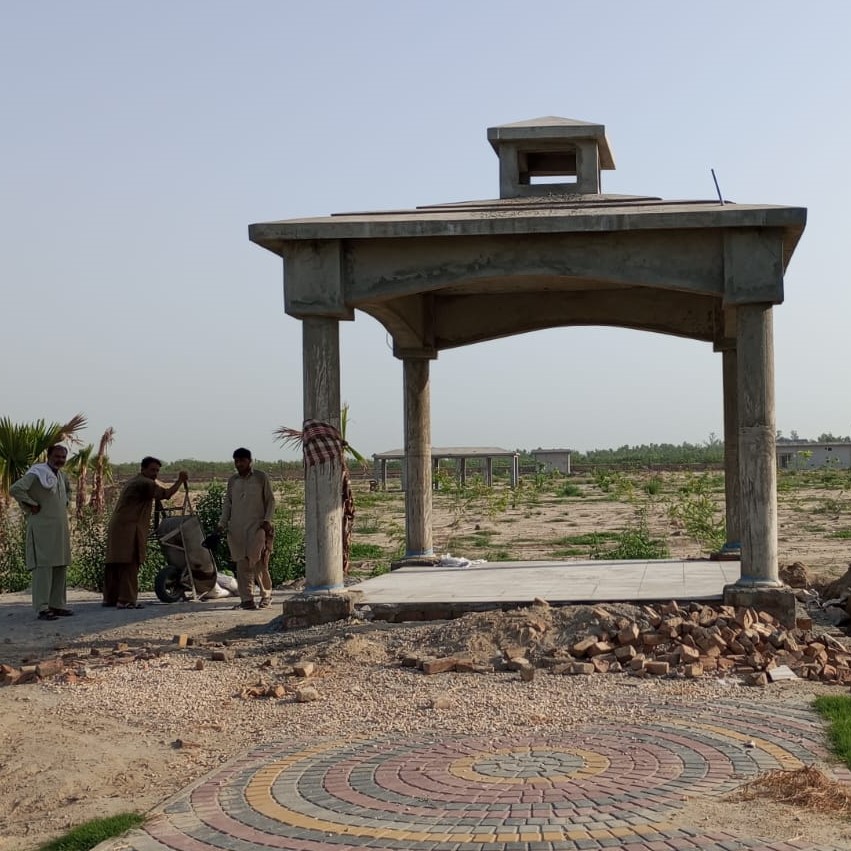
Hope and hurdles: Kundian forest park project’s impact on local livelihoods and tourism
She notes that many families have been compelled to leave their homes in rural areas and migrate to other villages and cities for better opportunities.
The impacts of climate change also affect migration. According to a report by the Asian Development Bank (ADB), these migrations typically occur internally or within the country. As per the 2017 census, 81 per cent of the total population of Dera Ghazi Khan district resides in villages, with a significant portion relying on agriculture.
A 2017 report on displacement and migration by the Sustainable Development Policy Institute (SDPI) referenced a survey indicating that at least one person in 50 per cent of households in Dera Ghazi Khan had migrated from the village. The report highlighted that 17 per cent of migrations were attributed to floods and rains.
Parveen's memories of her native land have not faded. She hopes the situation will improve, allowing her to return to her village by the river.
Published on 6 Dec 2023
